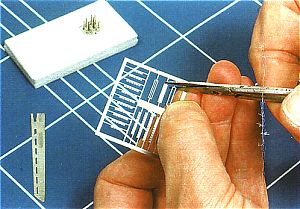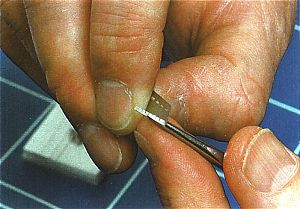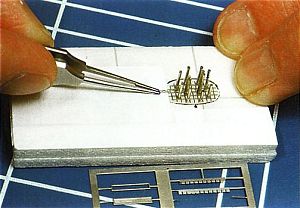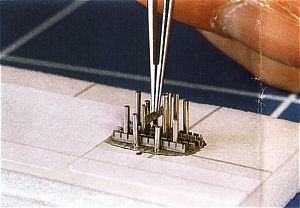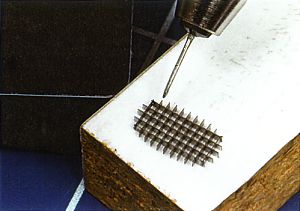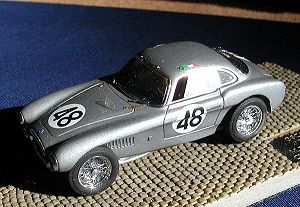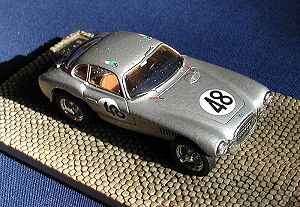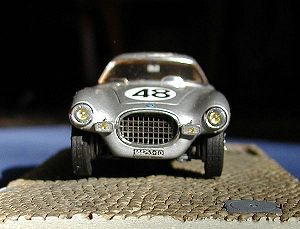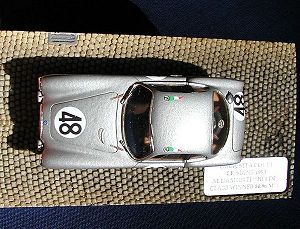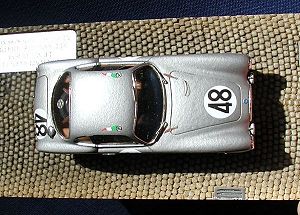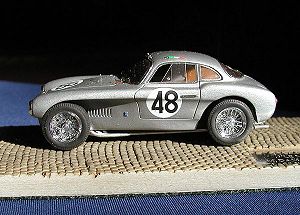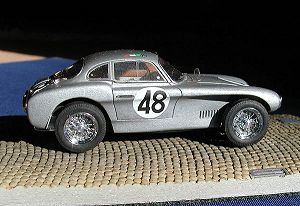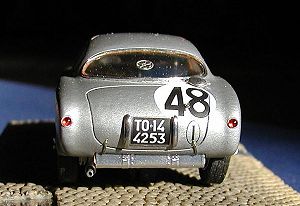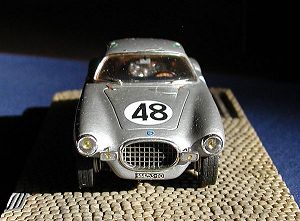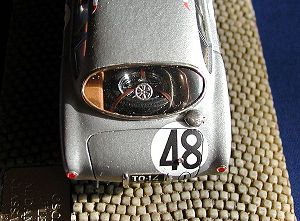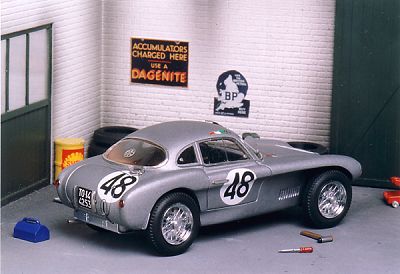Of the six Maserati brothers, Carlo, the eldest, sadly died young, at 30, Mario, no 4, swapping his spanners for paint brushes, became an artist, leaving Bindo, no. 2, Alfieri, no 3, Ettore, no 5 and Ernesto, no 6, to form Officine Alfieri Maserati, a car repair business, just prior to
World War I.
After hostilities ceased the brothers became increasingly involved in preparing clients' racing cars, based mainly on Isotta Fraschini and Diatto machines. In 1926 there appeared the first car bearing their name, built at their small factory in
Bologna. Alfieri, the founder and driving force, unfortunately had an accident during the Targa Florio, and never fully recovered from the subsequent operation, dying in 1932. By 1937 the arrival of the hugely financed Mercedes and Auto Union teams, coupled with a world wide recession, forced the 'Fratelli' into financial difficulties and the hands of the wealthy Modenese industrialist Orsi Family. As part of the deal the brothers were retained for ten years, from 1937 to 1947, during which time production moved to Modena in 1940.
On the day their contract expired, Bindo, Ettore and Ernesto upped sticks and hurried home to Bologna, indeed to some space in a disused part of their original factory, and set up with one lathe, one vertical drill, one shaper, one milling machine, no booze and no cigarettes! They had been forbidden by the Orsis to trade under their own name and came up with - wait for it! - Officine Specializzate per la Costruzione di Automobili Fratelli Maserati Spa, some handle! Thank goodness it became known simply as OSCA. On the very early cars, the words 'Fratelli Maserati' showed bigger than the 'OSCA' bit, but the Orsis soon put paid to that, not surprisingly.
Ernesto's first design was given the nomenclature Mt4 (Maserati Tipo 4), which begs the obvious question - whatever happened to Mt1, 2 and 3? - some would have it that the brothers deliberately started at no 4, to make it look as if they had 'previous form', although the family name would surely have assured this anyway! Truth is, it stood for 4 cylinders.
The little Mt4 2-seater, originally in open 1100cc form, was a success from the start utilising a FIAT block with OSCA's own o.h.c. alloy head, this beautifully constructed machine made its race debut at Pescara, Cornacchia at the wheel, in August 1948, followed a month later by its first win, an amazing victory for Villoresi with 1100cc of OSCA, stripped of its cycle wings, beating 2 litres of Ferrari in the Formula 2 race at Naples. At Lake Garda in October, Serafini gave the Mt4 its second win and the new marque was up and running, gaining an enviable reputation for superb workmanship, and giant killing! From 1949 to 1952 this reputation grew, with a new all alloy engine, developed by the brothers, replacing the original FIAT-derived units, race success came regularly, mainly in Italy, and particularly on the Mille Miglia, where its build
quality and durability shone through.
The company did not enter Le Mans until 1952, when the Torinese chemist Dott. Mario Damonte commissioned a most beautiful Vignale coupe body to be fitted to an MT4 chassis. This ran in the 1500cc class with a 1342cc motor, and led its class by a huge margin until its clutch failed at Arnage Corner. There is a most marvellous black and white film by the late Bill Mason (father of Pink Floyd's Nick), produced for the Shell Oil Company, which follows Dott. Damonte's co-driver, Martial (of whom I can find no further reference) in his epic push of the stricken car all the way from Arnage to the pits, a distance of over two miles. He looked absolutely shattered when he got there, but sadly the clutch was beyond repair.
For 1953 (our subject) Dott Damonte had the nose of the car considerably modified to a more conventional shape (the 1952 version had huge brake scoops forming part of the grille) he also had a new co-driver, Pierre Louis Dreyfus, who was quite a confusing character, running under various 'noms de volant', including 'Ferret'( I cannot find out why!) and in our year, 1953, as 'Heldé', which I can. 'Heldé' is the phonetic spelling, in French, of the initials L.D. (Louis Dreyfus, you see!)
This time they ran a 1092cc engine, and proceeded to win the 1100cc class with ease, coming 18th overall @ 80.96 mph.
POSTSCRIPT:
By this time the fame of the little OSCA was spreading to the United States, and an amazing overall win (with only 1500cc) in the Sebring 12 hours race in 1954 brought in a host of enquiries from that market, and by 1958 production reaches the dizzy heights of 30 cars per annum! But, by the time, the competition in the lower capacity classes was hotting up, from Porsche, Lotus and Cooper in particular, and the ageing Mt4 derivatives were no longer so competitive the 'Fratelli' were getting older and perhaps less energetic, and in 1963 (when Bindo was 83) sold out to Count Agusta, of MV Agusta motorcycle fame. The company carried on with exciting little road cars, but by 1967 it was all over. |
